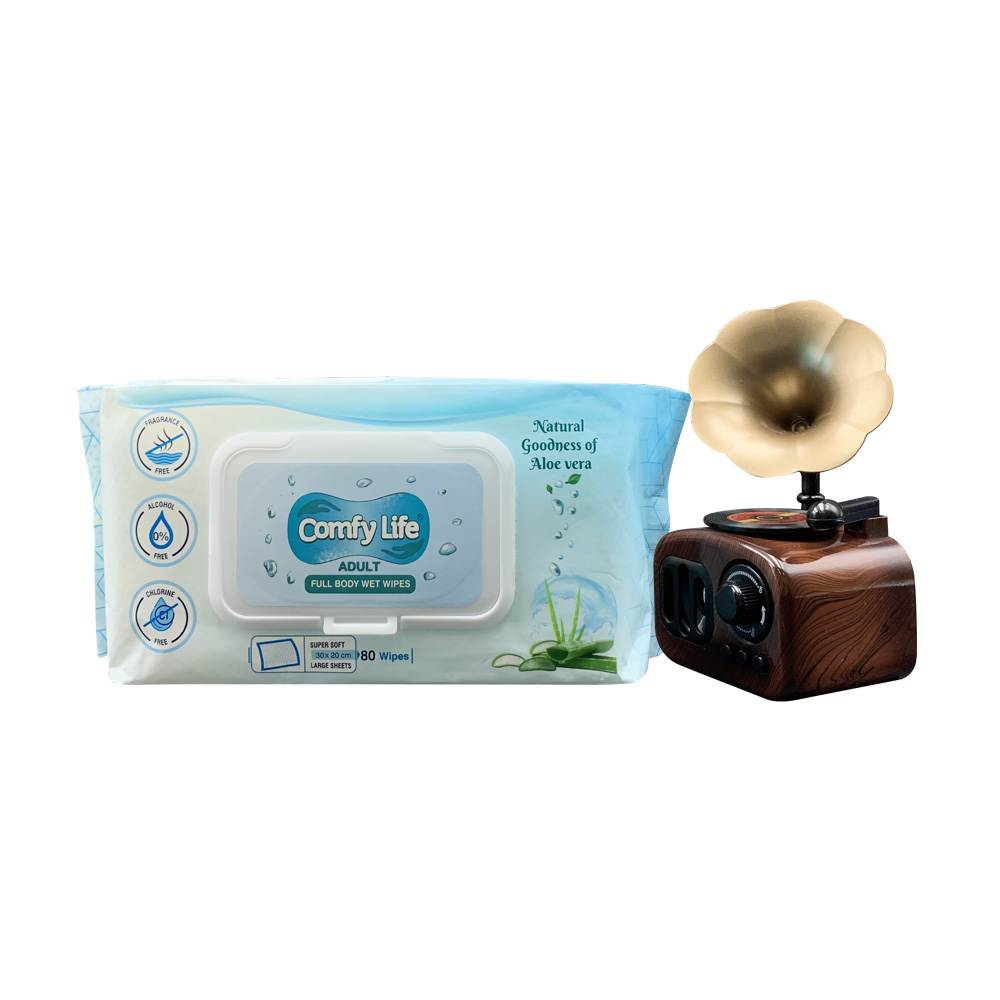The absorbency levels of alcohol wipes and medical wet wipes can vary based on their specific formulations, materials, and intended uses. It’s important to note that alcohol wipes are primarily designed for disinfection rather than absorption, so their primary function is to deliver and maintain the efficacy of the disinfecting solution.
Here are some factors that may influence the absorbency levels of alcohol wipes and medical wet wipes:
Alcohol Wipes:
- Disinfectant Solution:
- Alcohol wipes are saturated with a disinfectant solution, typically containing alcohol (such as isopropyl alcohol or ethanol) and other ingredients. The absorbency of the wipe is influenced by the concentration of the disinfectant solution.
- Saturated vs. Moistened:
- Some alcohol wipes are saturated with a substantial amount of disinfectant solution, while others may be moistened with a lighter amount. The saturation level can affect the perceived absorbency.
- Material Composition:
- The material used to make the wipe can impact its absorbency. Non-woven materials are commonly used for alcohol wipes due to their ability to hold and deliver liquids effectively.
- Purpose-Specific Formulations:
- Alcohol wipes may come in different formulations for specific purposes, such as skin disinfection, surface cleaning, or medical equipment sanitation. The formulation can influence absorbency.
Medical Wet Wipes:
- Material Composition:
- Medical wet wipes, designed for various purposes such as patient care, hygiene, or wound cleaning, can be made from different materials with varying levels of absorbency. Some may use softer, more absorbent materials for enhanced comfort.
- Intended Use:
- Wet wipes designed for medical use may have specific formulations tailored to the intended purpose. For example, wound-cleaning wipes may have different absorbent qualities compared to general-purpose hygiene wipes.
- Moisture Levels:
- The moisture level in medical wet wipes can vary. Some wipes may be more saturated, providing higher absorbency, while others may have a lighter moisture level for specific applications.
- Added Ingredients:
- Medical wet wipes may include additional ingredients such as emollients, antiseptics, or moisturizers. These ingredients can affect the overall feel and absorbency of the wipe.
- Single-Use vs. Multi-Use:
- Some medical wet wipes are designed for single-use applications, while others may be labeled as multi-use. alcohol wipes medical wet Single-use wipes may be more saturated for immediate effectiveness, while multi-use wipes may have a balance of moisture and absorbency.
Considerations:
- Application-Specific Requirements:
- Different applications may have specific requirements for absorbency. For example, wound care may require a more absorbent wipe compared to general surface cleaning.
- User Preferences:
- User preferences play a role in determining the perceived absorbency. Some individuals may prefer wipes with a higher moisture content for a refreshing feel, while others may prefer drier wipes for specific applications.
- Brand and Product Variation:
- Absorbency levels can vary between brands and specific products. Reading product descriptions, labels, and user reviews can provide insights into the absorbency characteristics of a particular alcohol wipe or medical wet wipe.
It’s essential to choose wipes based on the intended use and application requirements. When evaluating absorbency, consider factors such as the level of saturation, material composition, and any added ingredients that may affect the overall performance of the wipe in specific scenarios.
